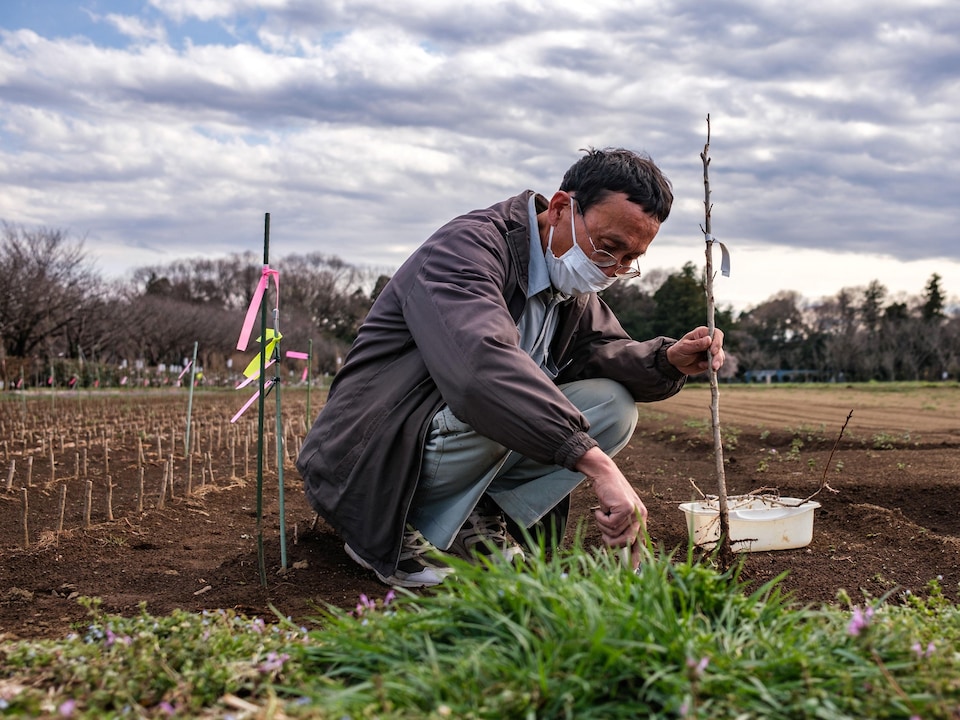
Every spring, Japan is so named about the dazzling pink and white flowers of its famous cherry trees, which are so many different types. Somei Yoshino. But this tree also causes problems, prompting some to plead for more diversity.
The weather brings a national frenzy every year in Japan, where the media competes with forecasts on the exact time of full bloom of cherry trees (Sakura) and where the spectators indulge in the pleasant manners of hanami – the admiration of their flowers.
Ang Somei Yoshino represents more than 90% of the ornamental cherry trees planted in Japan. Their flowering, which lasts about a week, tends to occur simultaneously on trees in a particular region, as they are clones of a specimen.
Appreciated for its rapid growth, this variety covered the whole of Japan during the country’s unbridled urbanization between the 1950s and 1980s. But it is also more exposed than others to diseases and tends to take up a lot of space as it grows. .
The secret is to plant the right kind in the right placesays Hideaki Tanaka, an expert on ornamental cherry trees who wants more diversity in this area in Japan.
There are all kinds of sakura, not just the Somei Yoshino. I want to help recreate the old times, when so many different things were admired with different flowering times, he added.
His horticultural farm in Yuki, in Ibaraki Prefecture (northeast of Tokyo), displays approximately one thousand cherry trees of 400 different varieties to encourage municipalities across the country to consider alternatives to Somei Yoshino.
His operation has also distributed more than three million sakura seedlings, including Somei Yoshinobut is now promoting another type, the Jindai Akebonoa cherry tree that is more resistant to infection and less large when it grows, making it easier to prune.
For decades, countless Somei Yoshino are not properly cut, leaving them vulnerable to so-called infection sorcerers’ broom disease forming clusters of unsightly branches and interfering with flowering.
Ang Somei Yoshino also grow very tall and wide, which can pose a risk in the event of a hurricane or other natural disaster in Japan, and their large veins can burst on the sidewalks.
Despite all these shortcomings, replacing this queen variety is not easy for municipalities, as residents are often attached to cherry trees in their neighborhood.
In Kunitachi, for example, in the western suburb of Tokyo, it took the city three decades to remove the 80 Somei Yoshino at 210 expected to be replaced.
With their outstretched branches, these trees form a floral tunnel that neighborhood residents want to take care of. People move here to admire them explains Ryusuke Endo, a manager of Kunitachi road services.
In Yokohama (southwest of Tokyo), the project is cutting down 300 cherry trees Somei Yoshino The boundary of a busy road has also recently caused chaos and noise in the local media.
ang Somei Yoshino will always be the main attractionhorticulturist Hideaki Tanaka himself admitted. But I want to help communities create other spaces where people can admire all sorts of types of cherry trees..
In Kunitachi, where the municipality started planting Jindai Akebonothe variety advocated by Mr. Tanaka, people are starting to realize that these trees are beautiful too wants to believe Mr. Endo.
Source: Radio-Canada

